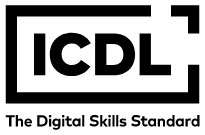Enhanced Entropy-Fuzzy Integration Decision Support System for Risk Assessment and Management of Hydraulic Engineering
Abstract
Against the backdrop of global climate change, frequent extreme weather events, and the increasingly complex development and management of water resources, the enhanced entropy - fuzzy integration decision support system for the risk assessment and management of hydraulic engineering has emerged. Traditional risk management methods, such as risk assessment based on probability theory, can handle known risks to a certain extent but are insufficient when dealing with highly ambiguous, uncertain, and complex risks. This paper introduces the design and empirical evaluation of the Enhanced Entropy - Fuzzy Integration Decision Support System (EEMFDS). Taking the Yangtze River Three Gorges Project as the research object, the application value of EEMFDS in the risk assessment and management of water conservancy projects is fully demonstrated through detailed requirement analysis, system architecture design, model construction, algorithm design, and empirical evaluation. EEMFDS adopts fuzzy set theory and enhanced entropy model, and through methods such as fuzzy quantification and enhanced entropy calculation, it effectively addresses key links such as risk identification, quantification, assessment, and decision support. The empirical results show that compared with traditional risk management methods, EEMFDS has significantly improved the risk identification accuracy. The average accuracy rate has increased from 84.7% to 90.6%, the response time has been shortened from 180 seconds to 120 seconds, the comprehensive robustness score has increased from 79.2% to 87.6%, it also has advantages in resource consumption, with the CPU usage time reduced by 30 hours and the storage space reduced by 20GB. The user satisfaction is relatively high, with an overall average score of 85.8%, highlighting its great potential in enhancing the level of intelligent risk management.
Full Text:
PDFDOI: https://doi.org/10.31449/inf.v49i20.7461

This work is licensed under a Creative Commons Attribution 3.0 License.









